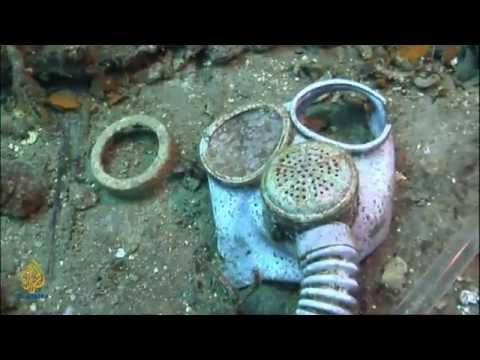In the Pacific Ocean, there are over 13,000 known shipwrecks that date back to the World War II era. Many of these vessels were sunk during fierce battles between Japan and the United States, and they now rest at the bottom of the sea, slowly rusting away. However, these shipwrecks pose a significant environmental threat, and it’s not just because of their historical significance. These wrecks contain oil, munitions, and other toxic substances that could be released into the surrounding waters at any moment.
When these ships were sunk, they were filled with oil and other hazardous materials. Over the years, rust and other forms of decay have caused the metal hulls to weaken, and the toxic substances they contain are now dangerously close to the surface. The longer these shipwrecks remain underwater, the greater the risk of a catastrophic spill.
Many of these wrecks lie in areas that are also rich in marine life. If a spill were to occur, the consequences could be disastrous. The oil and chemicals could devastate entire ecosystems, harming not just marine life but also the people who depend on these resources for their livelihoods.
But the risks of these shipwrecks are not just limited to the Pacific. The Japanese government has been monitoring the wrecks and has found that some of them are leaking toxic substances into the Sea of Japan, causing damage to local fishing grounds and harming the health of nearby communities.
Despite the risks, the international community has been slow to take action to address this issue. The sheer number of shipwrecks, combined with the cost and complexity of removing them, make it a daunting challenge. However, environmentalists are calling for urgent action before it’s too late.
There are several potential solutions to this problem. One approach is to remove the hazardous materials from the shipwrecks before they leak into the surrounding waters. This would require a massive effort and significant resources, but it could prevent a catastrophic spill.
Another approach is to create marine protected areas around the most vulnerable shipwrecks. This would restrict fishing and other activities in the area, reducing the risk of damage to the wrecks and the environment.
Finally, some experts have proposed using new technologies to monitor shipwrecks and detect leaks before they become catastrophic. For example, underwater drones equipped with sensors could be used to detect changes in the water around the wrecks, alerting authorities to potential risks.
In conclusion, the shipwrecks of the Pacific are more than just historical artifacts. They are a ticking time bomb, threatening the environment and the communities that depend on it. The international community must take action to address this issue before it’s too late. Whether it’s through removal, protection, or monitoring, the risks of these shipwrecks must be addressed to prevent a potential environmental disaster.

